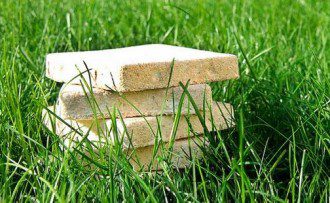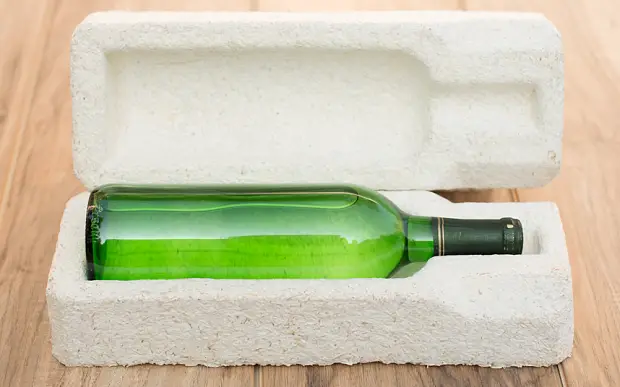Contributing writer for Wake Up World
As we well know, plastic is a serious issue throughout the world today. It takes hundreds — sometimes thousands — of years to biodegrade, releases toxic materials into the environment and harms marine wildlife. The problem is so dire that scientists believe plastic waste in the ocean will outnumber fish by 2050. We are literally unloading a dump truck full of plastic into the sea every minute. Not only does this toxic waste hurt wildlife and the environment, but it also makes its way into the food chain — and ends up on our dinner plates. Chemicals in plastics are linked with a spectrum of human health disorders, spanning from endocrine imbalances to cancer and heart disease.
Recycling the material is sketchy at best and even corn-based biodegradable plastics come with their own set of drawbacks. But it’s naive to think the material will disappear all together. What we need is an eco-friendly solution that will serve the purpose of plastic without consuming an inordinate amount of resources or displace the food supply. The answer might just be found in the most incredible of places: fungus roots.
Flexible, functional and sustainable
Fungus probably isn’t the first thing to come to mind when we think of an eco-friendly superhero or a plastic substitute. But where there’s a demand, industry responds. As more people are becoming aware of the fact that we are unquestionably drowning in plastic, consumers are apt to support companies who adopt creative solutions. It’s a win-win situation — the company can use this innovation as a marketing tool, while consumers (and the environment) benefit.
Mushroom packaging uses readily available waste like corn husks or stalks to create biodegradable packaging. Mycelium is the root structure of fungus that grows in a pattern of long strands, attaching itself to whatever is available close by, whether soil or, in this case, a specific packaging mold. Within a few days, these fibers bind together — creating a solid and strong material. The packaging was developed by American company Ecovative in a bid to replace polystyrene, which is very difficult to recycle and can take thousands of years to decompose. In contrast, mycelium packaging can be tossed into the garden where it will biodegrade naturally within a few months — faster if it’s composted.
Polystyrene — otherwise known as styrofoam — is a massive problem for the environment right now. Developed by Dow Chemical in 1944, it’s still widely used for packing peanuts and coffee cups, as well as fast-food clamshells. It also serves as insulation for buildings. The chemist who invented styrofoam stumbled upon it while seeking an alternative for rubber insulation. Tragically, the material breaks down very slowly and never truly disappears, at least not in our lifetime or that of our children nor grandchildren. When styrofoam does break down, it releases styrene, a known carcinogen.
Writes Ian Frazier for the New Yorker:
“After Hurricane Sandy, its clumps and crumbs covered beaches along the Atlantic Coast like drifts of dirty snow. Pieces of Styrofoam swirl in the trash gyre in the Pacific Ocean and litter the world’s highways and accumulate in the digestive systems of animals and take up space in waste dumps.”
A healthier alternative for both the environment and humans is found with mycelium packaging. Here’s how the process works:
- Agricultural waste like corn stalks are steam-pasteurized and chopped up.
- Trace nutrients are added along with a small amount of water.
- Mycelium pellets are mixed in and the mixture is put into a mold shaped like a piece of protective packaging.
- The mold is placed on a rack in the dark.
- Four days later the mushroom roots have grown throughout the mold, creating “a material almost indistinguishable from Styrofoam in form, function, and cost.”
- Heat is applied to kill the mycelium and halt growth.
Mushroom packaging can be made anywhere, utilizing local waste from agriculture with very little energy. Ecovative ultimately hopes to replace plastics on a global scale.
Futuristic fungus technology
Founded nine years ago, Ecovative has grown in leaps and bounds — doubling in size every year and employing over 60 people at its Green Island, New York factory. The company has licensed its process for mushroom packaging to Sealed Air, a $7.6-billion international packaging supplier largely known for Bubble Wrap. Other customers include Steelcase, Inc. (an office furniture company), Dell computers, Crate & Barrel and Puma athletic gear. Swedish retail giant Ikea is also looking into using the product. But packaging isn’t the only outlet for fungus technology.
Mycelium can be grown within wood pulp, resulting in a material similar to cork. In the Netherlands, designer Eric Klarenbeek is making durable furniture with the process. Using a 3D printer with potato starch as the printing filament, the model is purposely porous to support mycelium growth. Once the fungus has fully incorporated itself throughout the model, it’s baked to kill the mycelium. The end result is a sturdy piece of furniture that supports the weight of an adult. Additionally, Maurizio Montalti, also a designer, demonstrates how fungus is exceptionally flexible and can grow into an elastic, rubbery material along with more plastic-like products. And, for the conventional plastic that’s still with us, there’s even a fungus-based solution for that problem with a plastic-eating mushroom from the Amazon rainforest.
Are mushrooms the new plastic?
Product designer Eben Bayer reveals his recipe for a new, fungus-based packaging material that protects fragile stuff like furniture, plasma screens — and the environment.
Article sources
- www.ecovativedesign.com
- www.wakeup-world.com/2015/10/18/plastic-eating-mushroom-discovered-in-the-amazon-rainforest-a-solution-for-our-trash-saturated-world/
- www.telegraph.co.uk/news/earth/businessandecology/recycling/12172439/Ikea-plans-mushroom-based-packaging-as-eco-friendly-replacement-for-polystyrene.html
- www.newyorker.com/magazine/2013/05/20/form-and-fungus
- www.motherboard.vice.com/read/the-fungus-that-could-replace-plastic
- www.sustainablebrands.com/news_and_views/design_innovation/packaging/ecovative-foraging-fungi-displace-plastic-packaging-setti
About the author:
 Carolanne Wright enthusiastically believes if we want to see change in the world, we need to be the change. As a nutritionist, natural foods chef and wellness coach, Carolanne has encouraged others to embrace a healthy lifestyle of organic living, gratefulness and joyful orientation for over 13 years.
Carolanne Wright enthusiastically believes if we want to see change in the world, we need to be the change. As a nutritionist, natural foods chef and wellness coach, Carolanne has encouraged others to embrace a healthy lifestyle of organic living, gratefulness and joyful orientation for over 13 years.
Through her website Thrive-Living.net, she looks forward to connecting with other like-minded people from around the world who share a similar vision. You can also follow Carolanne on Facebook, Twitter and Pinterest.
Further reading from Carolanne Wright:
- The Most Eco-Friendly Nation on the Planet is Now Carbon Negative
- Don’t Ask, Just Plant — Taking Back Our Food Sovereignty with Guerrilla Gardening
- Plastic Waste in the Ocean Will Outnumber Fish by 2050
- Seed Bombs: A Creative (and Fun) Mission to Save the Bees and Butterflies
- Mind Control, Subliminal Messages and the Brainwashing of America
- Autistic Boy with Higher IQ Than Einstein Discovers Gift After Removal from State-Run Therapy
- Monsanto Charged with Crimes Against Nature and Humanity – Set to Stand Trial in 2016
- Dr Sebi: The Man Who Cures Aids, Cancer, Diabetes and More
- Plastic-Eating Mushroom Discovered in the Amazon Rainforest — A Solution for Our Trash Saturated World?
- Big Pharma and Organized Crime — They are More Similar Than You May Think
- Over 100 Scientific Studies Agree: Cannabis Annihilates Cancer
- Emotional Energetic Healing: The Future of Medicine is Here
- Why Every Parent Should Consider Unschooling
- The Greenhouse of the Future: Grow Your Own Food Year-Round With This Revolutionary System
- First U.S. City Produces More Electricity Than It Uses — With 100% Renewable Technology

If you've ever found value in our articles, we'd greatly appreciate your support by purchasing Mindful Meditation Techniques for Kids - A Practical Guide for Adults to Empower Kids with the Gift of Inner Peace and Resilience for Life.
In the spirit of mindfulness, we encourage you to choose the paperback version. Delve into its pages away from screen glare and notifications, allowing yourself to fully immerse in the transformative practices within. The physical book enriches the learning process and serves as a tangible commitment to mindfulness, easily shared among family and friends.
Over the past few years, Wake Up World has faced significant online censorship, impacting our financial ability to stay online. Instead of soliciting donations, we're exploring win-win solutions with our readers to remain financially viable. Moving into book publishing, we hope to secure ongoing funds to continue our mission. With over 8,500 articles published in the past 13 years, we are committed to keeping our content free and accessible to everyone, without resorting to a paywall.









